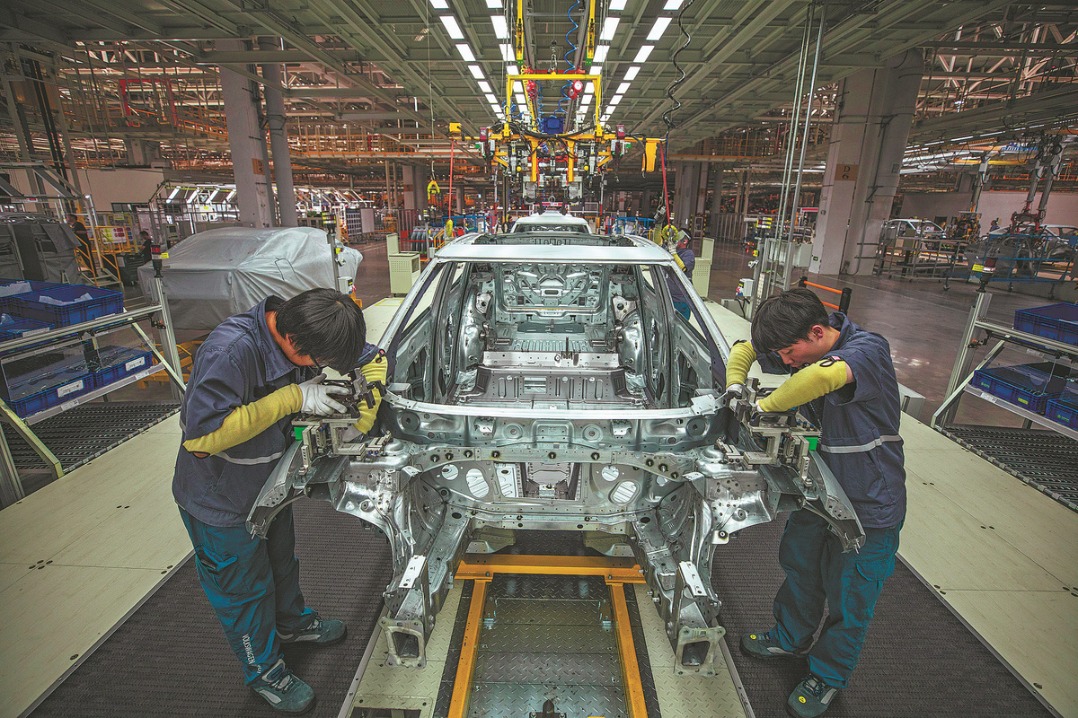Win-win, not zero-sum


That's what is helping increase China's cooperation with Latin America, much to the US' dismay
In recent years, as China has rapidly expanded its economic, diplomatic and cultural ties with Latin America, the US has become increasingly concerned about the situation. Yet such concerns are not only unwarranted, but could have a negative impact on the global trade order. China should continue its high-quality cooperation with Latin American countries under different frameworks, such as the China-Community of Latin American and Caribbean States Forum and the Belt and Road Initiative, and contribute to the recovery and development of the global economy.
In 2021, the US Congress and the military warned that China's expansion in Latin America had strategic and military objectives that could pose serious risks to US national security. The US Southern Command for Central and South America and the Caribbean warned that China was "seeking to establish global logistics and basing infrastructure in our hemisphere to project and sustain military power in more distant regions".Latin America and the Caribbean have long been considered by the US as its "backyard" and geographically the most distant region from China, but China's influence in the region has expanded rapidly in recent years. Total bilateral trade has grown from only $18 billion in 2002 to more than $400 billion by 2021, while US trade with the region was about $295 billion the same year. China's trade with Latin America has virtually remained unaffected by the COVID-19 pandemic.
While the US concerns in the region are driven by a Cold War mentality, provoking immigration policies and triggering trade disputes in the region, China's commercial activities benefit multiple parties there. Although the vast majority of China-Latin America projects are not directly aimed at poverty reduction, China's assistance and investment have, to varying degrees, promoted the economic and social development of the partner countries and indirectly helped curb or reduce poverty. At the same time, the increased willingness of both sides to cooperate in poverty reduction and the shared philosophy of poverty alleviation have also laid the foundation for China-Latin America cooperation in poverty reduction.
As early as 2008, the first "China Policy Paper on Latin America and the Caribbean" issued by the Chinese government clearly stated that "the Chinese government will strengthen exchanges and cooperation with Latin American and Caribbean countries in reducing poverty and narrowing the gap between the rich and the poor, and will encourage poverty alleviation institutions of the two sides to establish broad cooperative relations to share information and conduct joint research". In 2016, the Chinese government issued its second policy paper for Latin America and the Caribbean, which not only reaffirmed its willingness to engage in dialogue and exchanges with Latin America in areas such as poverty reduction and hunger eradication, but also stressed the importance of strengthening capacity for poverty reduction. The China-Latin America and Caribbean Cooperation Plan (2015-19) and the China-LAC Joint Action Plan for Cooperation in Key Areas (2022-24), jointly formulated by China and Latin America, also incorporate China-Latin America cooperation in poverty reduction. The former focuses on "dialogue and sharing", while the latter extends the scope of cooperation to "promoting new development models and advising on public policies".
China's development assistance to Latin America and its economic and trade activities provide the practical basis for cooperation in poverty reduction. The direct effect of foreign aid and economic and trade exchanges is to promote development, which is a prerequisite and condition for poverty reduction. From this perspective, both China's aid to Latin America and China-Latin America economic and trade activities have constituted an important and indispensable part of China-Latin America cooperation in poverty reduction.
A report released by the International Labor Organization in 2017 shows that Chinese investment activities in Latin America created about 260,000 jobs from 2003 to 2016. While there is no data on which income groups these jobs went to, the role of employment opportunities in income security in a region where labor remuneration is the main source of household income is self-evident. From another perspective, helping partner countries to improve their self-development capacity has become an important way for China to participate in poverty reduction cooperation, which is both an innovation in the South-South cooperation model and a new feature of the international poverty reduction cooperation system.
While trade and investment continue to show strong vitality, China and Latin America continue to expand cooperation areas, with fruitful cooperation in infrastructure, clean energy and agricultural trade, and the road for friendly cooperation across the Pacific Ocean getting wider. For example, the city of Lagoa-Dubaru in the northeastern part of Brazil is rich in wind resources. In 2021, the LDB Wind Power Expansion Project with a total installed capacity of 82,800 kilowatts introduced China's mature wind turbine equipment to Brazil, bringing the two together in the field of green and low-carbon economic construction. The local residents welcomed the project, and young people rushed to participate in technical training, hoping to win job opportunities. The project brought them not only a stable income, but also a sense of belonging.
Since it was proposed in 2013, the Belt and Road Initiative has made great progress and its member countries have gradually expanded from the countries involved in the ancient Silk Road Economic Belt to the periphery. The initiative adheres to the principle of extensive consultation, joint contribution and shared benefits, creating development opportunities for other countries. China has improved the infrastructure of many Asian and African countries through the construction of the Belt and Road, and promoted the sustainable development of their economies. Among countries in Latin America and the Caribbean, it has also become quite economically influential.
At present, no country can deal with economic impacts, climate change, poverty alleviation and other issues alone. The China-Latin America Forum helps to strengthen trust, deepen cooperation, and promote China and Latin America to work together to address various challenges and build a sustainable and better future.
The US agenda for the region is based on a democratic rhetoric that does not help the region realize development. Latin America as a continent needs more action than words for development. While the US does not understand this necessity and will, as usual, blame others for its inaction, China should continue partnering with the region based on its necessity but not rhetoric.
The author is former minister of tourism of Brazil and a professor of public policy at the School of Public Policy and Management at Tsinghua University. The author contributed this article to China Watch, a think tank powered by China Daily.The views do not necessarily reflect those of China Daily.
Contact the editor at editor@chinawatch.cn.

































